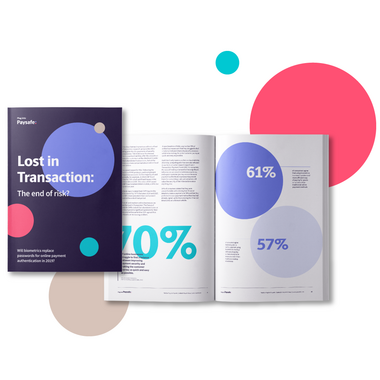
- Four minutes read
The trailblazing world of payments innovation
Key takeaways and trends from Money20/20 Asia 2018
I had the opportunity to speak at the inaugural version of Money 20/20, in Asia, which took place against the backdrop of the incredible city that's Singapore; a most impressive, multicultural global financial hub and economic powerhouse. I saw some interesting key trends emerging at the event, so here are my takeaways:
1. Artificial Intelligence (AI)
AI has existed for a long time, why the sudden "Cambrian explosion" in its use, in NVIDIA CEO's words? Because 3-4 years ago there was an inflection point in AI algorithms that correlate data and performance. In other words, the more data they consume, the better performance they deliver, versus the old AI algorithms whose performance plateaued after reaching a certain level of data input. This development, coupled with tremendous improvement in processing power (CPUs, GPUs. I/O performance) and the on-demand availability of cloud services like Google's Tensor Processing Unit (TPU) that can deliver 180 teraflops, has created the perfect conditions for AI solving problems like speech recognition, artificial vision, risk management, compliance, underwriting, self-driving cars, cashier-less stores, chatbots, and on and on.
2. The delivery of total customer-centricity
In the words of professor Andrew Ng, "AI is the new electricity" and much in the same way electricity changed pretty much every industry 100 years ago, AI/big data are starting to the do the same with the effect of delivering mass customization with products designed around customers' needs, time and stress (NTS), as BBVA calls them. The bank reports that its average 200 interactions per year with customers are moving from "brick" (face to face) to "glass" (mobile/laptop) and "air" (contactless/NFC), with customers only doing circa four branch-visits per year.
The use of AI will increase the number and personalisation of these interactions, not just around banking, but other needs such as buying a house, selecting insurance, saving for a vacation or planning and buying trips. It's no longer about "fintechs vs. banks" but rather about which fintechs and which banks will invest, collaborate and deliver solutions that meet the needs, create time and reduce stress for increasingly time-starved customers.
Point in case, Ant Financial talks about their 3-1-0 merchant loans: 3 minutes to apply, 1 second to get the funds and 0 human intervention.
In addition to the possibility of using AI as an enabler of mass customisation, there is a “cultural” component to customer-centricity which requires the engagement of the entire organisation, from the CEO to the newest hire - everyone needs to understand that the company is all about customer satisfaction. Anecdotally, a large US retail bank requires all its executives to do five calls per month to unsatisfied customers. I’m not sure there’s a more effective way to create first-hand awareness of the impact of falling short of customer expectations…
3. Transparent payments
Merchants and consumers use an app, a platform, a software … and “payments come along for the ride” (effortlessly, seamlessly). In the words of a major merchant: “get me out of the payments business” so that I can concentrate on my core business. At Paysafe, we believe the best payments are transparent. Whether in mobile ordering, cash, wallets, pay later, processing or integration with partners/ISVs, our focus is on leveraging technology to provide simple, fast, secure, cost-effective, cool payments.
4. Digital Identity & Trust
As the customer interactions move to "glass" and "air", using BBVA's analogy, understanding the user identity and creating a trust relationship becomes even more critical. This increasingly requires the clever use of biometry and of AI-driven risk management systems that leverage all pieces of available information, from device fingerprint, IP geolocation and the specific customer's normal use patterns, to behavioural science, in order to consistently deliver customer convenience AND total security at the same time.
It's the classic conundrum of risk management: the balancing of consumer convenience with the need to protect, but more and more, I believe we'll be able to achieve both outcomes, without the need to sacrifice one.
5. Data Protection & Privacy
Data protection and privacy, not just because of the all-important GDPR or equivalent regulations. We've all seen the large list of data breaches and the incredible pain (human, monetary and reputational), that results from them for consumers and companies alike. The statistics are striking: 74.2% of data breaches are caused by malicious outsiders, 7.7% by malicious insiders and 18.1% are accidental (source: Gemalto 2017), confirming that it's about technology as well as internal processes that can prevent both malicious attacks and human error. Even more concerning are the median days before a compromise is discovered: 416 days in 2011, 146 days in 2015 (source: Visa) and I assume it's well under 100 days now. A positive trend of faster detection, but it's still around three months before it's noticed, often not by the company who suffered the breach, but by someone on the outside.
As a consumer, I also don't want my personal data sitting in a dozen different places, as each constitutes unnecessary exposure to a future potential breach. My sense is that solutions are starting to emerge, often based on a blockchain fabric, that will federate governments and industry, so that no single point of failure/breach exists, such as in the concept of "fractional identity" (i.e. no single repository contains the entire identity, so it's unusable if stolen). Consumers will get authenticated, with full consent, leveraging trust anchors such as banks, government, credit agencies, telcos and fintechs. This model has the potential to deliver an unprecedented level of data protection and consumer consent/privacy.
So, those were my five top take aways from another interesting event looking at the dynamic world of payments. Money 20/20 Asia, I hope to see you next year!




